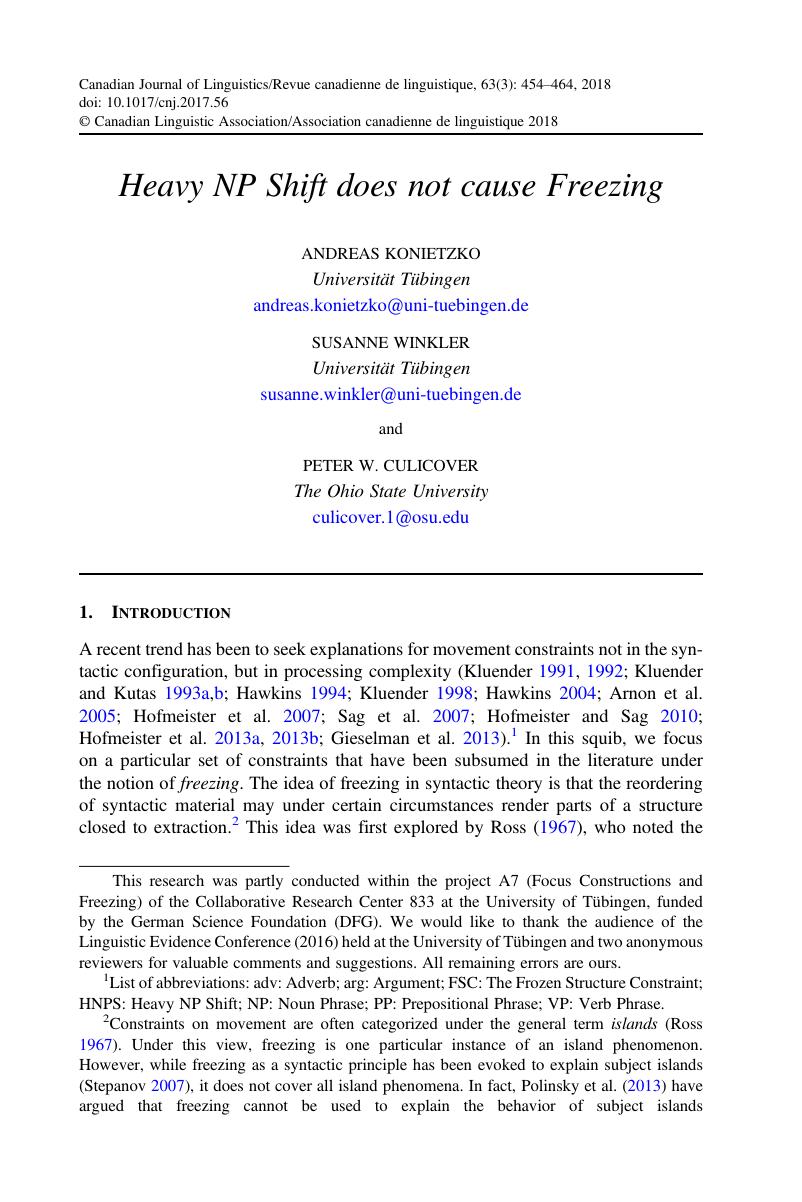Article contents
Heavy NP Shift does not cause Freezing
Published online by Cambridge University Press: 09 March 2018
Abstract

- Type
- Squib/Notule
- Information
- Canadian Journal of Linguistics/Revue canadienne de linguistique , Volume 63 , Issue 3 , September 2018 , pp. 454 - 464
- Copyright
- © Canadian Linguistic Association/Association canadienne de linguistique 2018
Footnotes
This research was partly conducted within the project A7 (Focus Constructions and Freezing) of the Collaborative Research Center 833 at the University of Tübingen, funded by the German Science Foundation (DFG). We would like to thank the audience of the Linguistic Evidence Conference (2016) held at the University of Tübingen and two anonymous reviewers for valuable comments and suggestions. All remaining errors are ours.
References
- 4
- Cited by




